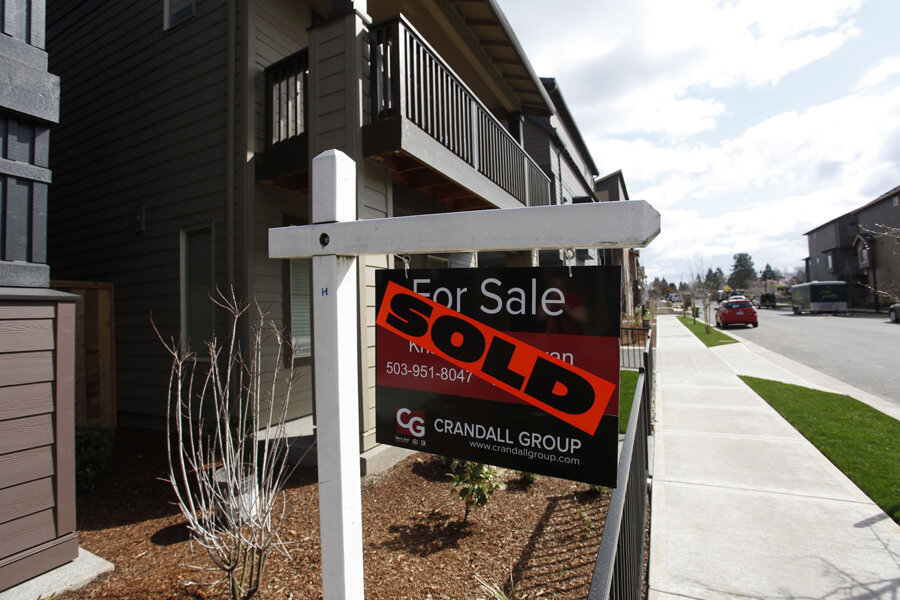Five ways to qualify for a mortgage with small downpayment
Loading...
You're ready to apply for a mortgage loan. Your credit scores are high. Your debt-to-income ratio is low. And you have the employment history that makes you an attractive borrower in the eyes of mortgage lenders.
There's just one problem: You don't have enough money to come up with a down payment of 20% of your home's purchase price.
The standard rule is that you need a 20% down payment when you are applying for a conventional mortgage, a loan not insured by the federal government. There's a reason for this bit of conventional wisdom: If you don't come up with this 20% down, you'll probably have to pay for private mortgage insurance, which can cost from 0.5% to 1% of your total loan each year. If you borrow $200,000, private mortgage insurance can cost you from $1,000 to $2,000 a year until you build up enough equity to cancel it.
Here's some good news, though: You don't really need 20% down to qualify for a mortgage loan. There are plenty of government programs that allow you to qualify for a mortgage loan with less. You'll also find that many banks and lenders will loan you mortgage dollars even if you can only come up with a down payment of 5%.
Just make sure that you have strong credit and income. The better your financials are, the more likely you are to qualify for a mortgage loan with a lower down payment.
If you can afford a down payment of 20%? That's probably your best move. It allows you to avoid private mortgage insurance and it helps you quickly build equity in your home, which could help if your home's value suddenly drops.
"While there are mortgage loans that allow less than 20% down, I would discourage it," says Dan Serra, a certified financial planner from Bethesda, Maryland. "The 20% down to me is a good insurance policy against an unexpected drop in home values in which the homeowner could be trapped with negative equity. I saw this contribute to a lack of mobility for homeowners who had to pass up opportunities to move for a better job or to be closer to family."
If you can't afford a 20% down payment — and for that $200,000 mortgage a down payment of 20% comes out to a whopping $40,000 — here are some options for loans that require smaller down payments.
1. Fannie Mae and Freddie Mac's 3% Down Payment Option
Most conventional lenders today offer the 97% loan-to-value program offered by Fannie Mae and Freddie Mac. This program allows borrowers to qualify for a mortgage loan with a down payment as low as 3% of a home's final purchase price.
There is a catch, though. At least one of the borrowers applying for this loan must be a first-time home buyer. Your mortgage loan can't be higher than $417,000 for this program.
If you're interested in this program, call a mortgage lender licensed to do business in your community. Most lenders offer this option.
2. FHA Loans
Loans insured by the Federal Housing Administration, better known as FHA loans, are another good choice for borrowers seeking a lower down payment. If you have a FICO credit score of at least 580, you can qualify for an FHA loan with a down payment of 3.5% of your home's purchase price.
Even if your credit score is lower than 580, you can still qualify for an FHA loan with a lower down payment. If your score is at least 500, you can apply for an FHA loan requiring a down payment of 10% of your home's purchase price.
The FHA doesn't originate mortgage loans, so if you want to apply for an FHA loan, you'll need to work with a bank or lender that offers them. Fortunately, the vast majority of lending institutions offer FHA loans.
3. VA Loans
Loans insured by the U.S. Department of Veterans Affairs are an even better option — if you meet the requirements. VA loans require no down payment at all. To qualify for a VA loan, though, you must be a current or past member of the U.S. Military, National Guard, or Reserves.
4. USDA Rural Home Loans
Another government-insured loan product that requires no down payment is the Section 502 loan insured by the U.S. Department of Agriculture. Better known as a USDA Rural Development loan, this loan product is available to homeowners in rural areas and some suburban areas. This program is designed to help borrowers with lower incomes. To qualify for such a loan, your household income can't be higher than the USDA's listed income limits in your county.
5. Call Your Lender
Even if you don't want to take out a government-insured mortgage loan, you might still qualify for a mortgage with a low down payment. Shop around with lenders licensed to do business in your community. You'll find that many will offer loans with down payments of 10%, 5%, or even lower — if you have the credit scores and income levels to put them at ease.







